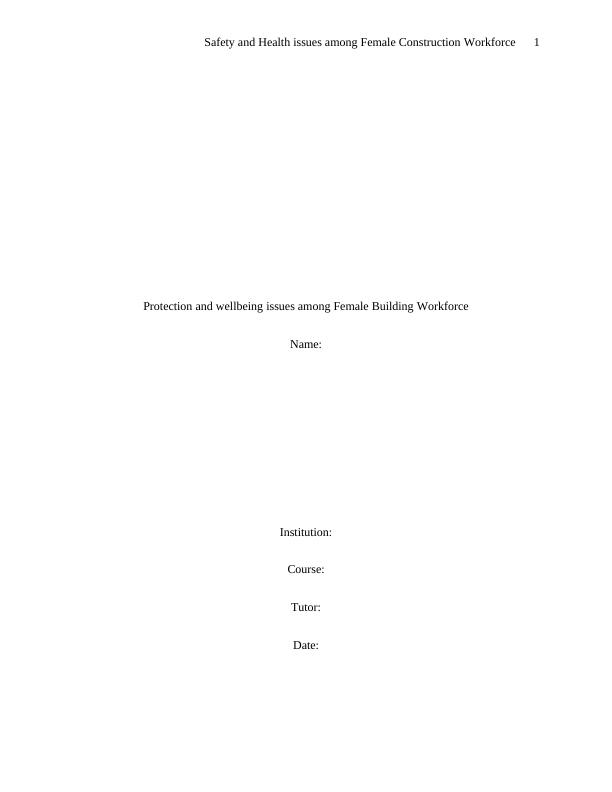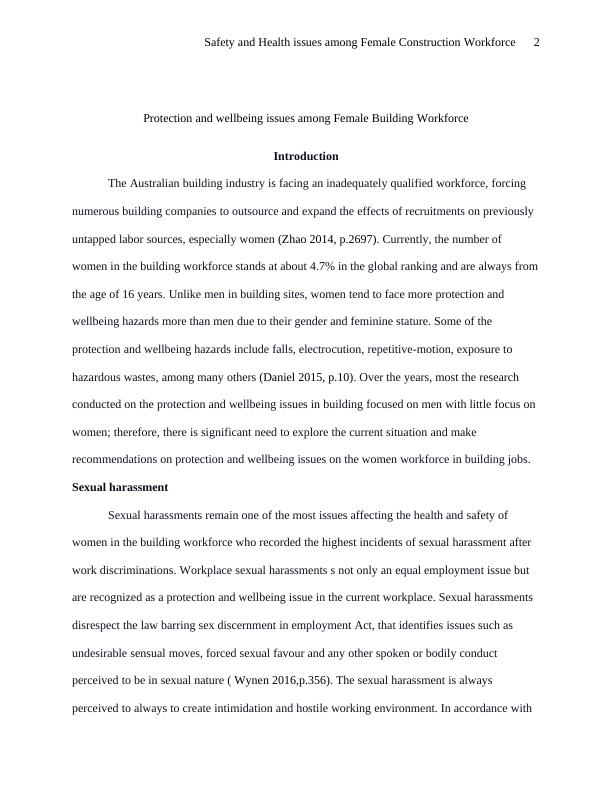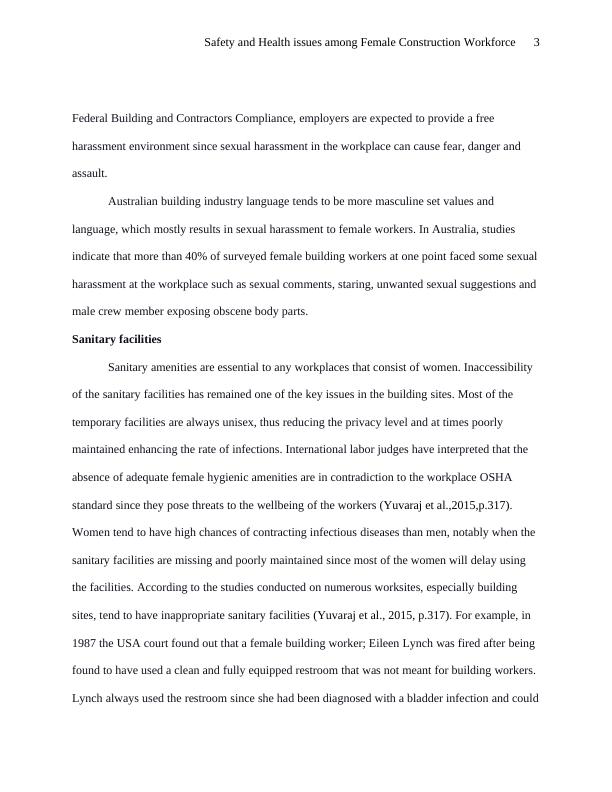Ask a question from expert
Protection and Wellbeing Issues among Female Building Workforce
Research and prepare an individual report on one aspect of Workplace Health and Safety (WHS) relevant to the Building Construction Industry.
7 Pages1485 Words49 Views
Added on 2022-07-27
Protection and Wellbeing Issues among Female Building Workforce
Research and prepare an individual report on one aspect of Workplace Health and Safety (WHS) relevant to the Building Construction Industry.
Added on 2022-07-27
BookmarkShareRelated Documents
End of preview
Want to access all the pages? Upload your documents or become a member.
Glass Ceiling Effect on Women at Work Places
|10
|2416
|425
WOMEN IN ISLAM Name of the Student Name of the University
|5
|844
|212
HRM523 Advanced Studies in Industrial Relations
|12
|3457
|202
Importance of Employment Laws in Healthcare Industry
|5
|979
|416
Women and Workplace Discrimination in Australian Organizations
|17
|4508
|90
Employee Relations in Human Resource Management
|1
|685
|72


